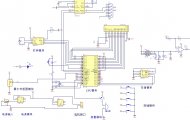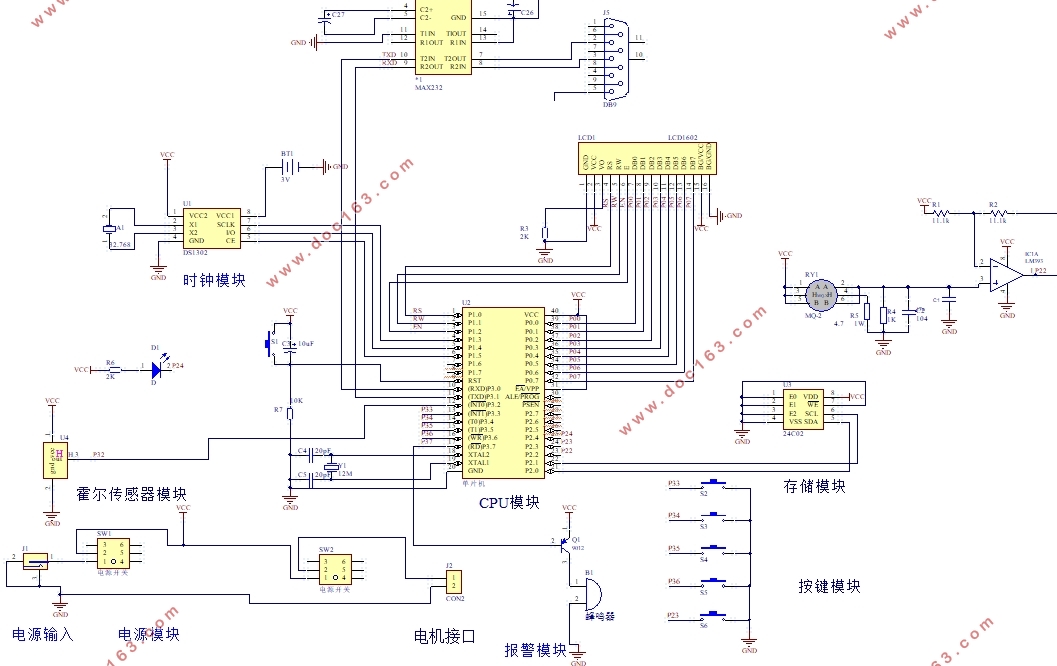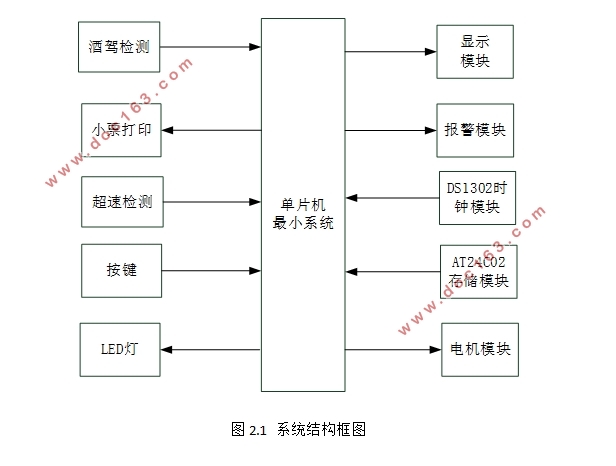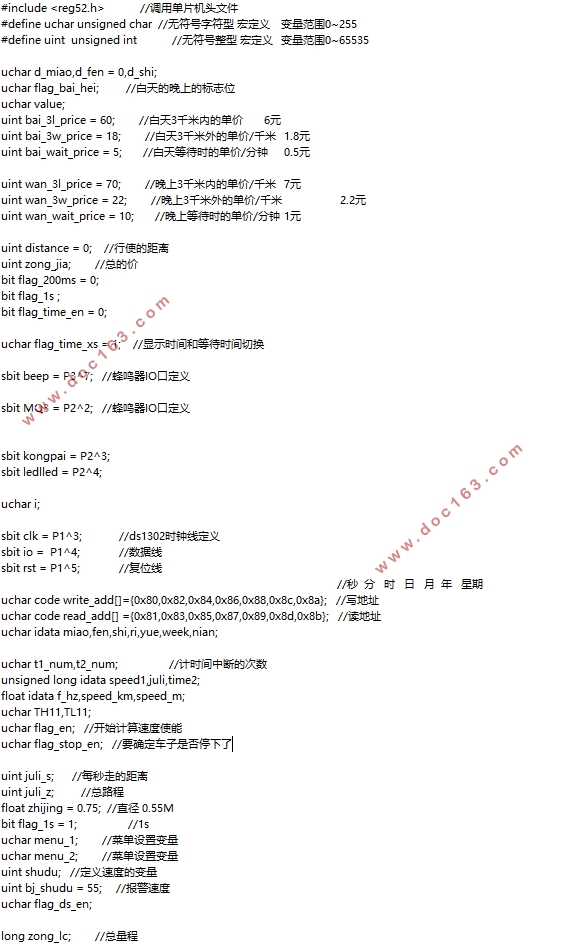基于单片机的出租车计价器的设计(含电路原理图,程序代码)

基于单片机的出租车计价器的设计(含电路原理图,程序代码)(开题报告,论文10000字,电路原理图,程序代码)
摘 要
在电子技术快速发展过程中,嵌入式技术被广泛应用于人们的日常生活中去。在出租车计价器的设计中,将智能芯片应用于相关设备研发中,能够保证出租车计费器能够准确计算出实际的行车里程以及相对应的乘车价格,保证收费的透明化,提高乘客的满意化程度。同时系统芯片的自动定时计数功能,对于收费精确计算,避免司机作弊的可能性,满足公平公正的设计需求。
本次出租车计价器由STC89C52单片机作为主控制器,在硬件上包括了液晶,小型打印机,测速传感器,酒精传感器等等,在软件功能上实现了年月日等时间信息的显示,行车速度的检测,超速报警,酒驾报警,打印收费小票等功能。全文在设计完软件和硬件的基础上,通过万用板来搭建系统的关键模型,并对各个功能进行测试,最终印证了设计,达到了设计目标
关键词:单片机,酒驾,计费,出租车
Abstract
With the rapid development of electronic technology, embedded technology is widely used in people's daily life. In the design of taxi meter, the application of intelligent chip in the research and development of relevant equipment can ensure that the taxi meter can accurately calculate the actual driving mileage and the corresponding ride price, ensure the transparency of charging and improve the satisfaction of passengers. At the same time, the automatic timing counting function of the system chip can accurately calculate the charge, avoid the possibility of driver cheating, and meet the design requirements of fairness and justice.
The taxi meter is mainly controlled by STC89C52 single chip microcomputer. The hardware includes LCD, small printer, speed sensor, alcohol sensor, etc. in the software function, it realizes the display of time information such as date, month, driving speed detection, overspeed alarm, drunk driving alarm, printing charging ticket and other functions. Based on the design of software and hardware, the key model of the system is built through the universal board, and each function is tested. Finally, the design is confirmed and the design goal is achieved
Key words: single chip microcomputer, drunk driving, billing, taxi
系统方案
本次出租车计价器的总体架构如图2.1所示,在硬件上包括了STC89C52单片机,电机,显示模块,报警模块,DS1302时钟模块,酒驾检测,小票打印模块,超速检测模块,按键,LED灯等等。在软件设计功能的功能上,按下开关按键驱动电机,由霍尔传感器来检测脉冲信号,模拟行驶的里程,计算应付金额,并且会结合等待时间,行驶路程综合进行计费;司机可以通过按键来控制LED灯,以表面当前车内是否有客;可以检测司机是否酒驾,如果有则通过蜂鸣器进行报警提醒;可以检测出租车是否超速,如果超速则报警提醒;单片机断电后,LCD显示数据不丢失;可以实现小票的打印。



目录
第一章 绪论 3
1.1课题研究背景及意义 3
1.2研究现状 4
1.3本文主要内容 5
第二章 系统设计 5
2.1系统方案 5
[版权所有:http://DOC163.com]
2.2 主控制器方案设计 6
2.3电源供电方案选择 7
2.4显示系统方案选择 7
第三章 硬件电路设计 8
3.1 单片机最小系统设计 8
3.2显示模块电路设计 10
3.3时钟电路设计 11
3.4测速电路设计 12
3.5 按键电路 13
3.6蜂鸣器电路设计 13
3.7小票打印控制电路 14
3.8储存电路设计 15
3.9酒精检测电路设计 15
3.10 LED灯电路设计 15
第四章 软件设计 16
4.1 KEIL UVISION介绍 16
4.2 LCD显示程序 17
4.3读取时间程序设计 18
4.4测速程序设计 19
4.5小票打印程序设计 20
第五章系统测试 21
5.1实物制作 21
5.2功能测试 21
总 结 23
参考文献 24
致 谢 25
